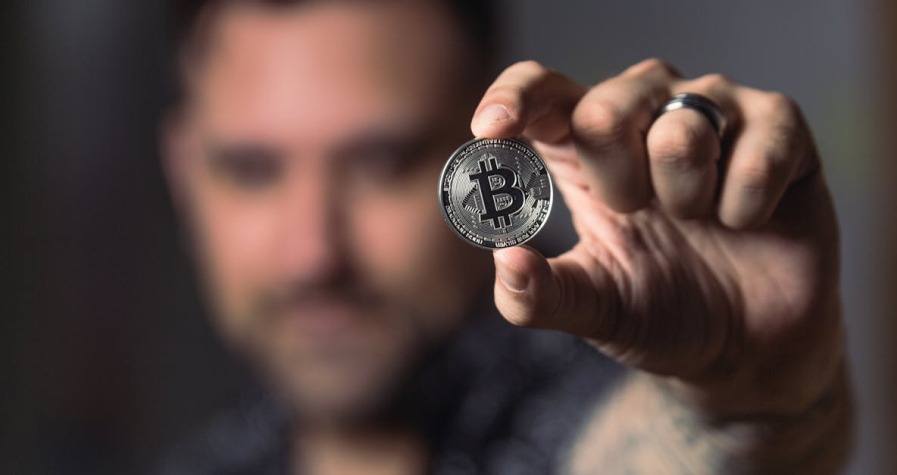Your cryptocurrency investments are prime targets for hackers and cybercriminals who constantly seek vulnerabilities in digital wallets and exchanges. With billions stolen from crypto platforms each year, protecting your digital assets has never been more critical.
Two-factor authentication (2FA) serves as your first line of defence against unauthorised access to your crypto accounts. This security layer adds an extra verification step beyond your password, making it exponentially harder for attackers to breach your accounts even if they’ve compromised your login credentials.
Setting up 2FA isn’t just recommended – it’s essential for anyone serious about crypto security. Whether you’re a seasoned trader managing substantial portfolios or a newcomer taking your first steps into digital currencies, implementing proper 2FA protection can mean the difference between keeping your investments safe and losing everything to sophisticated attacks.
What Is Two-Factor Authentication (2FA) and Why Your Crypto Needs It
Two-factor authentication (2FA) creates an additional security layer beyond your standard username and password combination. This system requires two distinct forms of verification before granting access to your cryptocurrency accounts: something you know (your password) and something you have (your mobile device or authentication app).
Understanding the Three Authentication Factors
Authentication systems rely on three primary categories of verification methods:
| Factor Type | Description | Examples |
|---|---|---|
| Something You Know | Information memorised by the user | Passwords, PINs, security questions |
| Something You Have | Physical devices in your possession | Smartphones, hardware tokens, smart cards |
| Something You Are | Biometric characteristics unique to you | Fingerprints, facial recognition, voice patterns |
2FA combines two of these factors to create a significantly stronger security barrier than single-factor authentication alone.
How 2FA Functions in Cryptocurrency Security
Your crypto exchange or wallet activates 2FA by generating a unique time-sensitive code each time you attempt to log in. This code appears on your registered device or authentication app and expires within 30-60 seconds. Hackers cannot access your account even if they obtain your password because they lack the secondary authentication factor.
The authentication process follows this sequence: you enter your username and password, the system prompts for your 2FA code, you retrieve the code from your device or app, and access grants only after successful verification of both factors.
Critical Security Statistics for Cryptocurrency
Cryptocurrency exchanges experience approximately 13 security breaches annually according to blockchain security firm CertiK’s 2023 report. These incidents result in losses exceeding $3.8 billion across the industry. Accounts protected with 2FA show 99.9% fewer successful unauthorised access attempts compared to password-only accounts.
Why Standard Passwords Fail Against Crypto Threats
Password-only security creates multiple vulnerabilities that cybercriminals exploit regularly. Data breaches expose millions of login credentials annually and hackers often purchase these credentials on dark web marketplaces for as little as £0.80 per account. Phishing attacks trick users into entering passwords on fake websites that criminals control.
Social engineering tactics manipulate users into revealing their login information through fake customer support calls or fraudulent emails. Keyloggers and malware can capture your keystrokes and transmit passwords directly to attackers without your knowledge.
The Financial Impact of Inadequate Security
Individual cryptocurrency holders lose an average of £7,200 per successful account compromise according to Chainalysis research. These losses occur through unauthorised trades, complete wallet draining, or transfers to addresses controlled by criminals. Recovery of stolen cryptocurrency remains virtually impossible due to the irreversible nature of blockchain transactions.
2FA implementation reduces your risk of becoming part of these statistics by creating an additional barrier that cybercriminals cannot easily bypass remotely.
Types of 2FA Methods for Cryptocurrency Security
Cryptocurrency platforms offer three primary 2FA methods, each providing different levels of security for your digital assets. Understanding these options helps you choose the most appropriate authentication method based on your security requirements and risk tolerance.
SMS-Based Authentication
SMS-based authentication sends a unique verification code to your registered mobile phone number after you enter your password. You receive this code within seconds and must input it to complete the login process.
This method offers basic security improvements over password-only access, making it 99.9% more effective at preventing unauthorised logins. However, SMS authentication carries specific vulnerabilities that make it the least secure 2FA option available.
Security risks include:
- SIM swapping attacks where criminals transfer your phone number to their device
- SMS interception through network vulnerabilities
- Phone theft compromising your authentication method
- Dependency on mobile network availability
SMS authentication works best for cryptocurrency beginners who want immediate security improvements without additional apps or devices. Many major exchanges like Coinbase and Binance support SMS 2FA as their entry-level security option.
Authenticator Apps
Authenticator apps generate time-based one-time passwords (TOTPs) directly on your smartphone or tablet. Popular apps include Google Authenticator, Authy, and Microsoft Authenticator, which create new six-digit codes every 30 seconds.
These apps work offline by using cryptographic algorithms stored locally on your device. You scan a QR code during setup to link your crypto account with the authenticator app, eliminating the need for network communication during authentication.
Key advantages of authenticator apps:
- Codes generate locally without internet transmission
- 30-second refresh cycles prevent code reuse
- Multiple account management within single apps
- Backup and sync options across devices (with Authy)
Authenticator apps provide significantly stronger security than SMS methods because hackers cannot intercept the codes remotely. This method suits most cryptocurrency users who want reliable protection without purchasing additional hardware.
Major cryptocurrency platforms including Kraken, Gemini, and Crypto.com recommend authenticator apps as their preferred 2FA method for enhanced account security.
Hardware Security Keys
Hardware security keys represent the most secure 2FA method available for cryptocurrency protection. These physical devices, such as YubiKey or Titan Security Keys, connect to your computer or smartphone via USB, NFC, or Bluetooth.
You must physically possess and activate the hardware key to authenticate login attempts. The device generates unique cryptographic signatures that cannot be replicated or intercepted digitally, making remote attacks virtually impossible.
Hardware key security features:
- Physical possession requirement prevents remote compromise
- Cryptographic authentication protocols resist phishing attempts
- No battery dependency for USB-connected models
- Multi-protocol support including FIDO2 and WebAuthn
Hardware keys cost between £20-£60 but provide enterprise-level security for high-value cryptocurrency portfolios. This method suits serious traders and institutions managing substantial digital asset holdings.
Leading cryptocurrency exchanges like Coinbase Pro and Bitfinex support hardware key authentication for their most security-conscious users. You can register multiple hardware keys to prevent lockouts if one device becomes unavailable.
Setting Up 2FA on Popular Cryptocurrency Exchanges
Implementing 2FA across major cryptocurrency exchanges protects your digital assets through platform-specific security protocols. Each exchange offers distinct setup processes and authentication methods tailored to their security infrastructure.
Binance 2FA Setup
Binance provides multiple 2FA options through its dedicated authenticator app and third-party solutions. You can enable 2FA by downloading the Binance Authenticator app from your device’s app store and linking it to your account through the security settings menu.
Access your Binance account settings and navigate to the security section to begin the setup process. Select “Enable” next to the two-factor authentication option and choose between the Binance Authenticator app or Google Authenticator based on your preference.
Scan the QR code displayed on your screen using your chosen authenticator app to establish the connection. Enter the six-digit verification code generated by the app to confirm the setup and activate 2FA protection for your account.
| Setup Step | Action Required | Security Benefit |
|---|---|---|
| Download app | Install Binance Authenticator | Local code generation |
| Scan QR code | Link account to app | Secure connection establishment |
| Enter verification | Confirm 6-digit code | 2FA activation |
| Backup codes | Save recovery codes | Account recovery option |
Binance requires 2FA codes for withdrawals and sensitive account changes once activated. The Binance Authenticator app stores data locally on your device, reducing the risk of server-side security breaches affecting your authentication credentials.
Coinbase 2FA Configuration
Coinbase supports authenticator apps and SMS-based 2FA, though the platform strongly recommends app-based authentication for enhanced security. Navigate to your account settings and select the security tab to access 2FA configuration options.
Choose your preferred 2FA method from the available options, with Google Authenticator and Authy representing the most secure choices. Coinbase generates time-based one-time passwords (TOTP) that refresh every 30 seconds, ensuring each login attempt requires a current verification code.
Follow the setup wizard by scanning the provided QR code with your authenticator app and entering the generated code to verify the connection. Coinbase automatically applies 2FA protection to login attempts, fund transfers, and account setting modifications once configuration completes.
The platform displays backup recovery codes during setup that you must store securely for account recovery purposes. Coinbase’s 2FA system integrates with withdrawal confirmations and API access controls to provide comprehensive account protection.
Kraken Security Implementation
Kraken offers advanced 2FA options including authenticator apps, hardware tokens, and biometric authentication for comprehensive account protection. Access the security settings through your account dashboard and select the two-factor authentication configuration menu.
Enable 2FA for both login authentication and withdrawal confirmations to maximise your account security. Kraken supports Google Authenticator, Authy, and hardware security keys such as YubiKey for multi-layered protection options.
Configure separate 2FA requirements for different account functions, including trading activities, fund withdrawals, and API access permissions. The platform allows you to set up multiple 2FA devices for backup access whilst maintaining security integrity.
Kraken’s implementation includes master key protection and global settings lock features that prevent unauthorised changes to your security configuration. The exchange generates unique backup codes for each 2FA method you enable, providing multiple recovery options for account access restoration.
Securing Your Crypto Wallets with 2FA
Cryptocurrency wallets require robust security measures that go beyond the exchange-level protections you’ve already implemented. Implementing 2FA across your wallet infrastructure creates multiple security barriers that protect your private keys and transaction authorisations.
Hardware Wallet Protection
Hardware wallets store your private keys offline in dedicated devices, creating an air-gapped security environment that isolates your assets from internet-based threats. Combining hardware wallets with 2FA for your exchange accounts establishes a comprehensive security framework that addresses both storage and trading vulnerabilities.
Self-custody through hardware wallets ensures complete control over your private keys whilst eliminating dependence on potentially vulnerable exchange storage systems. Popular hardware devices like Ledger Nano S Plus and Trezor Model T integrate seamlessly with 2FA-enabled exchange accounts, allowing secure transfers whilst maintaining offline key storage.
Secondary device verification enhances hardware wallet security by requiring 2FA codes from separate authentication devices during transaction confirmations. This approach means attackers would need physical access to both your hardware wallet and your 2FA device to compromise your assets.
Configure your hardware wallet’s companion software to require 2FA verification for:
- Transaction confirmations above predetermined amounts
- Firmware updates to prevent malicious modifications
- Seed phrase recovery operations during wallet restoration
- Application installations for different cryptocurrency types
Software Wallet Security
Software wallets running on computers and mobile devices face greater exposure to malware and network-based attacks compared to hardware alternatives. Enabling 2FA wherever supported significantly reduces risks associated with password compromise and unauthorised access attempts.
Regular software updates patch critical vulnerabilities that cybercriminals exploit to gain wallet access. Configure automatic updates for wallet applications whilst maintaining 2FA protection for the update installation process itself.
Network security practices complement 2FA protection by reducing attack surface exposure:
- Avoid public WiFi when accessing software wallets to prevent man-in-the-middle attacks
- Use VPN connections to encrypt data transmission and mask IP addresses
- Enable firewall protection on devices running wallet software
- Install anti-malware software with real-time scanning capabilities
Account monitoring through 2FA-protected notification systems alerts you to suspicious activities before significant losses occur. Configure alerts for:
- Login attempts from unrecognised devices or locations
- Transaction initiations above specified threshold amounts
- Password change requests or security setting modifications
- API access attempts or third-party application connections
Most software wallets including Exodus, Electrum, and Trust Wallet support authenticator app integration rather than SMS-based 2FA due to superior security characteristics. Google Authenticator and Authy generate time-sensitive codes locally on your device, eliminating interception risks associated with SMS delivery systems.
Best Practices for Managing Your 2FA Setup
Managing your 2FA configuration properly ensures maximum protection for your cryptocurrency investments. These practices establish robust security layers whilst maintaining reliable access to your accounts.
Backup Codes and Recovery Options
Backup codes serve as your emergency access method when your primary 2FA device becomes unavailable. These one-time recovery codes generate during your initial 2FA setup and provide account access if you lose your authenticator device or hardware token.
Store backup codes in multiple secure locations including offline safes or encrypted digital vaults. Physical storage options include bank safety deposit boxes or home safes that protect against fire and theft. Digital storage requires encrypted password managers with strong master passwords and two-factor authentication enabled on the password manager itself.
Never store backup codes on the same device you use for cryptocurrency trading or in easily accessible locations like desk drawers or phone notes. Hackers who obtain these codes can bypass your 2FA protection entirely since most backup codes don’t expire automatically.
Create multiple copies of your backup codes using different storage methods to prevent single points of failure. Update your backup code storage locations whenever you change addresses or security arrangements. Test your backup codes periodically by using one to verify they still function correctly with your accounts.
Regular Security Audits
Conduct comprehensive security reviews of your cryptocurrency accounts every 30 days to identify potential vulnerabilities. These audits verify that your 2FA systems function correctly and detect unauthorised access attempts.
Review authorised devices lists in your exchange and wallet account settings monthly. Remove any devices you no longer recognise or use from these lists immediately. Check login activity logs for unusual access patterns including unfamiliar IP addresses or login times outside your normal usage periods.
Update all security-related applications including authenticator apps and hardware wallet firmware when new versions become available. Security patches in these updates often address newly discovered vulnerabilities that criminals actively exploit. Enable automatic updates where possible to maintain current protection levels.
Verify that your 2FA codes generate correctly across all your cryptocurrency platforms during each audit. Test backup recovery methods including backup codes and alternative authentication devices to ensure they remain functional when needed.
Monitor your email accounts for security notifications from cryptocurrency platforms and investigate any alerts immediately. Enable login notifications on all accounts to receive real-time alerts about access attempts. Document any security incidents or suspicious activities to track patterns and improve your protection strategies.
Common 2FA Mistakes to Avoid When Protecting Your Crypto
Relying on SMS-Based 2FA as Your Primary Protection
SMS-based 2FA creates vulnerabilities that cybercriminals actively exploit through SIM swapping attacks. Hackers contact your mobile provider and convince them to transfer your phone number to a device they control. Once they gain access to your SMS messages, they receive your 2FA codes and compromise your accounts. Authenticator apps like Google Authenticator generate codes locally on your device, eliminating the risk of SMS interception and providing superior security for your cryptocurrency holdings.
Using Weak or Reused Passwords Alongside 2FA
Your password remains the first line of defence even with 2FA enabled. Cryptocurrency accounts require passwords with at least 16 characters that combine uppercase letters, lowercase letters, numbers and symbols. Using the same password across multiple platforms increases your risk exponentially if one service experiences a data breach. Cybercriminals use sophisticated tools that can crack weak passwords within hours, making your 2FA protection irrelevant if they access your account through password vulnerabilities.
Failing to Secure Your 2FA Backup Codes
2FA backup codes provide account recovery access when you lose your primary authentication device. Storing these codes in unsecured locations like email drafts, cloud storage without encryption or written notes creates security gaps. Cybercriminals who gain access to your email or discover physical notes can bypass your 2FA protection entirely. Store backup codes in encrypted password managers or secure physical locations separate from your primary devices.
Ignoring Software Updates for Authentication Systems
Outdated authenticator apps and wallet software contain security vulnerabilities that hackers exploit regularly. Security patches address known exploits and strengthen authentication protocols that protect your cryptocurrency investments. Delaying updates by even 30 days can expose your accounts to attacks that newer versions prevent. Enable automatic updates for your authenticator apps and check for wallet software updates weekly to maintain optimal security.
Neglecting Hardware Wallet Integration with 2FA
Hardware wallets store private keys offline but require 2FA protection on connected exchange accounts for comprehensive security. Many cryptocurrency holders assume hardware wallets eliminate the need for additional authentication measures on exchanges where they transfer funds. Cybercriminals target exchange accounts to intercept transactions before they reach your hardware wallet. Combine hardware wallet security with authenticator app-based 2FA on all connected platforms to create multiple security barriers.
| Common 2FA Mistake | Security Risk Level | Recommended Solution |
|---|---|---|
| SMS-based 2FA only | High | Switch to authenticator apps |
| Weak passwords | High | Use 16+ character complex passwords |
| Unsecured backup codes | Medium | Store in encrypted password managers |
| Outdated authentication apps | Medium | Enable automatic updates |
| Missing exchange 2FA with hardware wallets | High | Implement 2FA on all connected platforms |
Accessing Crypto Accounts Through Unsecured Networks
Public WiFi networks lack encryption and allow cybercriminals to intercept your 2FA codes through man-in-the-middle attacks. VPN connections encrypt your data transmission and protect authentication codes from network-based interception. Coffee shops, airports and hotels frequently experience network compromises that expose user credentials and authentication data. Use dedicated VPN services when accessing cryptocurrency accounts away from your secure home network to maintain 2FA effectiveness.
Troubleshooting 2FA Issues and Recovery Methods
Common 2FA Problems You’ll Encounter
Network connectivity issues frequently prevent verification code delivery to your authentication app or mobile device. Poor signal strength or internet connectivity disrupts the synchronisation between your device and the authentication server. App misconfiguration occurs when time settings on your device don’t match the server’s clock, causing one-time passwords to fail validation.
Invalid OTP errors appear when you enter expired codes or experience timing mismatches between your device and the authentication system. These errors increase during periods of heavy network traffic or when your device’s clock runs significantly fast or slow compared to coordinated universal time.
Account lockouts activate after 3-5 consecutive failed 2FA attempts on most cryptocurrency exchanges. This security feature protects your account from brute force attacks but can lock you out if you repeatedly enter incorrect verification codes or experience persistent connectivity problems.
Device Loss Recovery Strategies
Recovery codes serve as your primary backup method when you lose access to your 2FA device. These 8-10 digit codes bypass normal 2FA requirements and grant one-time access to your account. Store recovery codes in encrypted digital vaults like Vault12 Digital Vault to maintain security whilst ensuring accessibility.
Authenticator app reconfiguration involves removing the old device from your account settings and establishing a new connection with your replacement device. Contact exchange support immediately after device loss to temporarily disable 2FA whilst you complete the recovery process. Most exchanges require identity verification through government-issued documents before processing 2FA removal requests.
Hardware security key replacement requires ordering a new device and registering it through your exchange’s security settings. Keep a backup hardware key configured on your account to maintain access if your primary key becomes lost or damaged.
Recovery Code Management Best Practices
| Storage Method | Security Level | Accessibility | Recommended Use |
|---|---|---|---|
| Encrypted digital vault | High | Medium | Primary backup |
| Physical safe | High | Low | Long-term storage |
| Password manager | Medium | High | Daily access codes |
| Multiple locations | Medium | Medium | Redundancy protection |
Print recovery codes on acid-free paper and store copies in separate physical locations to prevent total loss from fire or theft. Encrypt digital copies using AES-256 encryption before storing them in cloud services or external drives.
Professional Recovery Services
Contact exchange customer support when standard recovery methods fail or when you’ve lost access to both your primary authentication method and backup codes. Provide government identification, proof of account ownership, and transaction history to verify your identity during the recovery process.
Document your recovery attempt with screenshots and reference numbers for each support interaction. Recovery processes typically require 7-14 business days for completion, depending on the exchange’s verification requirements and the complexity of your situation.
Preventing Future 2FA Problems
Configure multiple authentication methods on each cryptocurrency exchange to create redundant access paths. Enable both authenticator apps and hardware security keys when platforms support multiple 2FA types simultaneously.
Update your contact information regularly and verify that backup email addresses remain accessible. Test your recovery methods quarterly by temporarily disabling your primary 2FA method and accessing your account through backup authentication.
Maintain current backups of all authentication data including QR codes, recovery phrases, and device serial numbers in your encrypted storage solution. Replace authentication devices every 2-3 years to prevent hardware failure from compromising your account access.
Conclusion
Your cryptocurrency investments deserve the strongest protection available and 2FA delivers exactly that. By implementing two-factor authentication across all your crypto accounts you’re creating multiple security barriers that make it exponentially harder for cybercriminals to access your digital assets.
The choice between SMS authenticator apps and hardware keys depends on your specific security needs but any 2FA method is significantly better than relying on passwords alone. Remember to maintain your backup codes conduct regular security audits and avoid common mistakes like using public WiFi for crypto transactions.
Taking these security measures seriously isn’t just about protecting your current holdings – it’s about ensuring your long-term success in the cryptocurrency space. Start securing your accounts with 2FA today and give yourself the peace of mind that comes with knowing your digital assets are properly protected.
Frequently Asked Questions
What is two-factor authentication (2FA) and why is it important for cryptocurrency?
Two-factor authentication (2FA) is a security measure that requires two forms of verification: something you know (password) and something you have (mobile device or authentication app). It’s crucial for cryptocurrency because it creates an additional security barrier against hackers. With crypto exchanges experiencing around 13 security breaches annually and losses exceeding £3.8 billion, 2FA-protected accounts show 99.9% fewer successful unauthorised access attempts compared to password-only security.
Which type of 2FA is most secure for cryptocurrency accounts?
Hardware security keys offer the highest level of security, requiring physical possession to authenticate and providing robust protection against remote attacks. Authenticator apps are the second-best option, generating time-based codes offline and being less susceptible to interception. SMS-based 2FA is the least secure due to vulnerabilities like SIM swapping and message interception, though it still provides better protection than passwords alone.
How do I set up 2FA on major cryptocurrency exchanges?
Each exchange has specific setup processes. For Binance, download the Binance Authenticator app and link it to your account. Coinbase supports both authenticator apps and SMS, with app-based authentication recommended for enhanced security. Kraken offers advanced options including hardware tokens and biometric authentication. Generally, access your account security settings, enable 2FA, scan the QR code with your authenticator app, and verify with a generated code.
Should I enable 2FA on my cryptocurrency wallet as well?
Yes, implementing 2FA on wallets is essential as security must extend beyond exchange-level protections. Hardware wallets, which store private keys offline, should be combined with 2FA for exchange accounts. Software wallets are more vulnerable to malware and network attacks, so enabling 2FA wherever supported is crucial. Use secondary device verification for transaction confirmations and maintain regular software updates to patch vulnerabilities.
What are the best practices for managing 2FA backup codes?
Store backup codes securely in multiple locations, such as encrypted digital storage and physical copies in secure locations like safes. Never store them on the same device as your authenticator app or share them with others. Create multiple copies and test recovery methods regularly. Keep these codes separate from your regular authentication setup to ensure access recovery if your primary 2FA device is lost or damaged.
What common 2FA mistakes should I avoid?
Avoid relying solely on SMS-based 2FA due to SIM swapping vulnerabilities. Don’t use weak passwords, leave 2FA backup codes unsecured, or neglect software updates for authentication apps. Never access crypto accounts through unsecured networks without VPN protection. Ensure you integrate 2FA with hardware wallets rather than relying only on exchange-level protection, and don’t forget to regularly audit your security settings every 30 days.
How can I recover access if I lose my 2FA device?
Use recovery codes that you should have saved during initial 2FA setup. If unavailable, contact your exchange’s support team with proper identification. Most platforms have account recovery procedures requiring identity verification. Prevent future issues by configuring multiple authentication methods, maintaining secure backups of recovery codes, and regularly testing your recovery options to ensure they work when needed.
How often should I audit my cryptocurrency security settings?
Perform security audits every 30 days to identify vulnerabilities and verify 2FA functionality. During audits, review authorised devices, monitor for suspicious activity, update security applications, and test backup recovery methods. Regular auditing helps maintain robust security measures and ensures your 2FA configurations remain effective. This proactive approach significantly enhances protection against evolving cyber threats targeting cryptocurrency investments.








